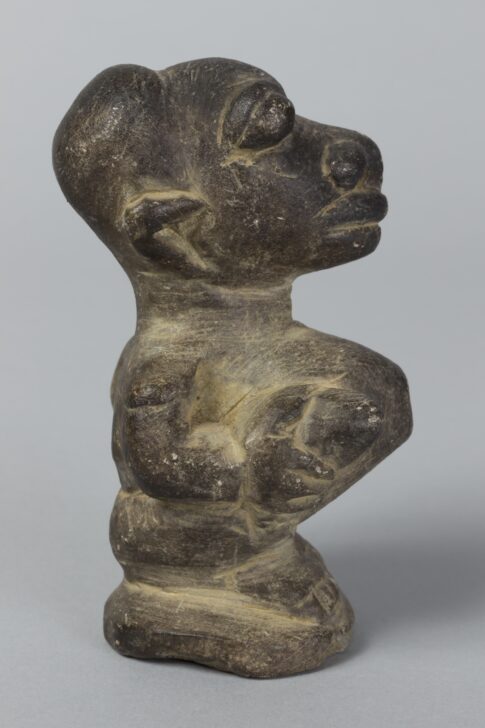Female Figure
Sierra Leonean

Description
Subject Matter:
Called "nomoli" in Mende, these soapstone figures date to between the 15th and 17th centuries. Scholars attribute the figures to the Sapi, as they were called by Portuguese traders in what is today Sierra Leone. Based on historical documents and current practices of the Temne, Baga, and Bullom, lingusitic descendants of the Sapi, the figures may have been carved to commemorate elite men and women or ancestors. Although these figures are no longer made, they have been found and repurposed by Mende, Temne, and Bullom peoples.
References Cited:
Lamp, Frederick J. 1983. "House of Stones: Memorial Art of Fifteenth-Century Sierra Leone" in The Art Bulletin, Vol. 65 No. 2.
Levenson, Jay A. (ed). 2007. Encompassing the Globe: Portugal and the World in the 16th & 17th Centuries. Washington, D.C.: Arthur M. Sackler Gallery, Smithsonian Institution.
Physical Description:
Crouching or seated female figure with an elongated face that tilts backwards. The figure is holding her breasts and has a distended stomach and deep navel.
Usage Rights:
If you are interested in using an image for a publication, please visit https://umma.umich.edu/request-image/ for more information and to fill out the online Image Rights and Reproductions Request Form.